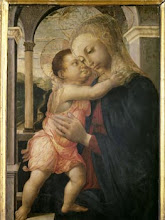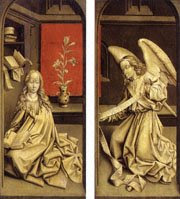


ASSERETO, Gioachino
(b. 1600, Genova, d. 1649, Genova)
Biography
Italian painter. At the age of 12 he studied with Luciano Borzone and c. 1614 entered the Genoese studio of Andrea Ansaldo. Among a number of lost early paintings was a large Temptation of St Anthony done at the age of 16. Several complex compositions with small figures, including the Apotheosis of St Thomas Aquinas (Lille, Musée des Beaux-Arts), the Last Supper (Genoa, Museo Accademia Ligustica di Belle Arti), the Stoning of St Stephen (Lucca, Museo e Pinacoteca Nazionale) and the Crowning of the Virgin (Taggia, Dominican Convent), perhaps date from 1616-26. These are close in style to works such as Bernardo Strozzi's bozzetto (c. 1620, Genoa, Museo Accademia Ligustica di Belle Arti) for an altarpiece of Paradise (destroyed) and to other contemporary works by Ansaldo, Giulio Benso and Giovanni Andrea de' Ferrari, which also derive their figure style from Mannerism.
Assereto's earliest dated painting, SS John the Baptist, Bernard, Catherine, Lucy and George (1626; Recco, S Giovanni Battista), is distinguished by its silvery colour and dramatic contrasts of light and dark, and by the powerful realism and vitality of the individual saints. Here he absorbed Borzone's sfumato technique and skill as a portrait painter, while the crisp contours of the drapery suggest Ansaldo. Assereto's work from c. 1626-36 sparkles with rich colour and detail, as in the strikingly naturalistic and intense Ecstasy of St Francis (1636, Genoa, Cassa di Risparmio). The work of the Lombard Mannerist painters Cerano, Morazzone and Giulio Cesare Procaccini that had influenced Strozzi and Ansaldo before 1620 also had an effect on Assereto's early work. This is apparent in the elongated figures and high-keyed colours of his two octagonal vault frescoes, David and Abimelech and SS John and Peter Healing the Lame Man, in SS Annunziata del Vastato, Genoa. The frescoes were dated c. 1630. Sharp-edged draperies, meticulous ornamental detail and jewel-like colours ranging from lime to pink and orange characterize Assereto's vivid narrative painting Alexander and Diogenes (c. 1630; Berlin, Staatliche Museen) and his altarpiece SS Cosmas and Damian Curing the Sick (Genoa, SS Cosma e Damiano), in which some of the figures resemble those by Orazio de' Ferrari, who may have worked with Assereto in Ansaldo's studio.




























.jpg)


.jpg)











